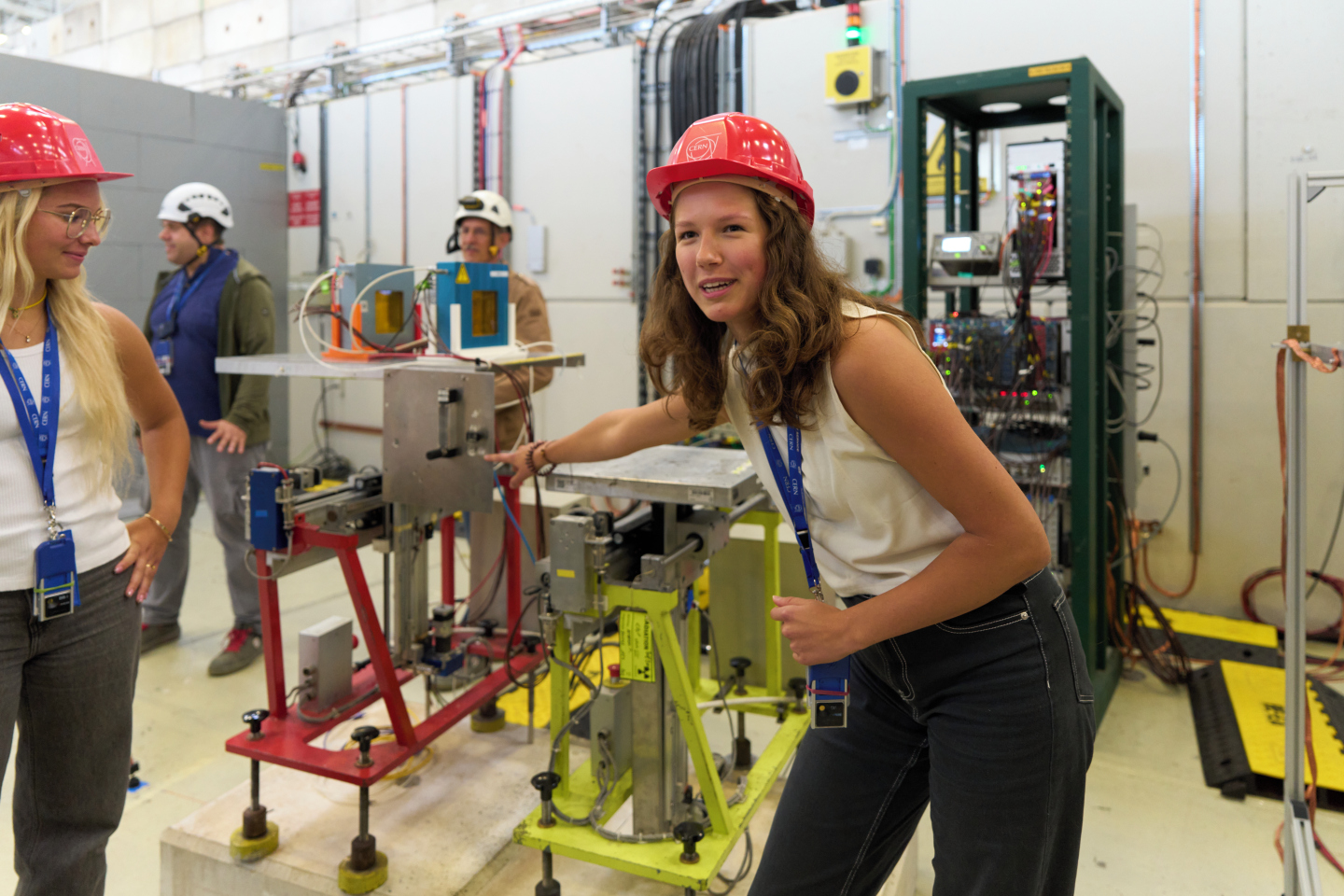
Saskia from "Mavericks" points out the bubbler of one of the Delay Wire Chambers to participants at the tenth anniversary celebration of BL4S. (Image: CERN/BL4S)
From 12 to 26 September, CERN and DESY (the German electron synchrotron facility) welcomed the winners of the 2024 Beamline for Schools (BL4S) competition. Students from Estonia, Japan and the USA carried out their own experiments using accelerator beams at the facilities. "Mavericks", the team from Estonia, and "Sakura Particles", the team from Japan, came to CERN, while "SPEEDers", the team from the United States, was invited to DESY.


BL4S started in 2014 in the context of CERN's 60th anniversary. Over the past ten years, more than 20 000 pupils from all over the world have taken part in the competition and 25 teams have been selected as winners. The participation rate has been rising consistently over the years, with a record 461 teams from 78 countries submitting an experiment proposal in 2024.
The fruitful collaboration between CERN and DESY started in 2019; this year marks its fifth anniversary.
Beamline for Schools is an education and outreach project funded through the CERN & Society Foundation by individual donors, foundations and companies.






